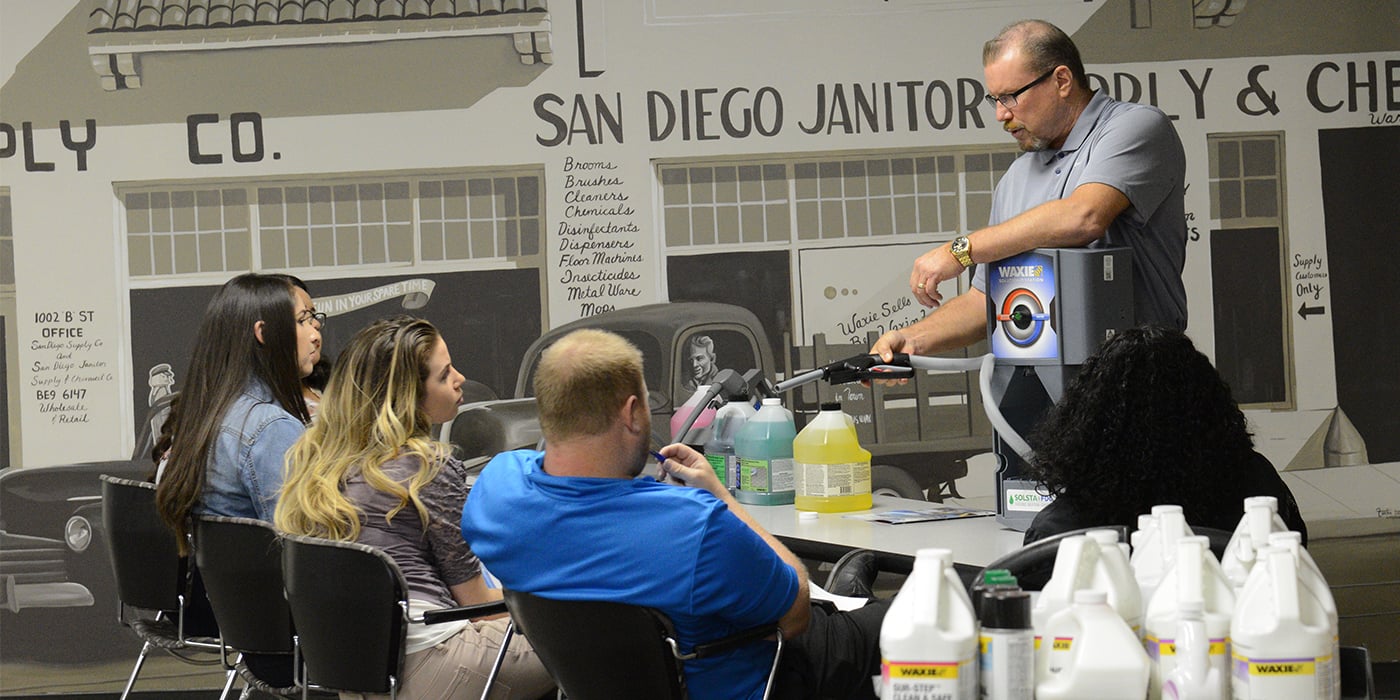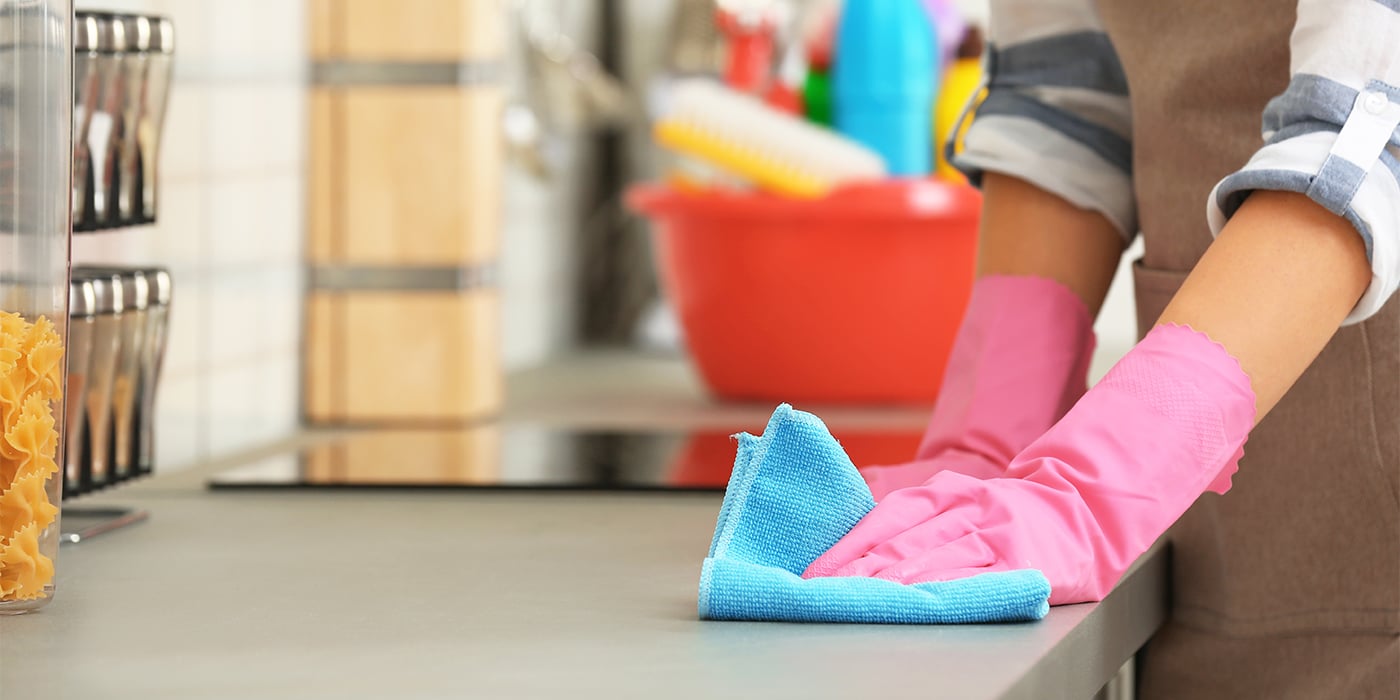
Guest Blog By: Jessica Clifton with ReAgent | August 13, 2020
Not all chemicals need special handling or storage because not all chemicals are harmful, but toxic, corrosive, flammable, and explosive chemicals, for example, need special care and the proper safety precautions.
Extremely hazardous chemicals might require handlers to wear personal protective equipment such as goggles, rubber gloves, and aprons, and storing hazardous chemicals can also require special types of containers as well as environment control. This type of chemical is typically only handled in the workplace.
10 tips for chemical safety in the workplace
Whether you work in an office, a laboratory or in a manufacturing facility, there are precautions you should take according to the chemicals you might be handling. Of course, the level of potential chemical harm in an office is relatively low compared to a manufacturing facility, but there are things you should still be aware of.
1. Make sure you have proper ventilation – whether you’re working in an office, a laboratory or on the factory floor, proper ventilation is crucial. Carbon monoxide levels are something to be particularly aware of, especially if you’re working in an enclosed space. A chemical laboratory and manufacturing facilities, on the other hand, must have well-designed ventilation systems that can pump out any noxious gases.
2. Establish and implement SOPs – standard operating procedures for safety in a factory or laboratory should cover the different stages of chemical handling. These SOPs must include the delivery of raw materials, storage, processing, packaging, transport, and disposal. Each stage of the manufacturing process requires specific SOPs.
3. Keep up-to-date with staff training – especially if you’re handling hazardous chemicals. Handling hazardous chemicals requires specific knowledge about the individual chemical, and even if you’re not handling it directly, you should learn the safety protocols and what to do in case of an accident.

WAXIE Chemical Specialist John McPhail leading a training session
4. Install the necessary detectors and alarms (and test them regularly) – some chemicals, such as carbon monoxide, are highly toxic at certain levels but are odorless and colorless. Aside from standard smoke detectors, carbon monoxide detectors and other types of gas sensors and detectors should be installed as necessary for your premises.
5. Consider installing AI monitoring systems for factories and laboratories – data from equipment, pipes, storage, and the environment can be continually collected and processed, not only to optimize your operations, but also for safety reasons. Artificial intelligence (AI) monitoring systems can do this extremely efficiently, often without human supervision.
6. Organize your storeroom – if you’re storing chemicals, make sure they’re stored correctly and your storerooms or storage facility is checked regularly. Different types of chemicals require specific containers, or to be at a certain temperature or pressure. Chemicals in storage must also be properly labelled, and accessible but well-protected. When it comes to the office, avoid storing volatile or flammable materials like paint thinners in rooms that are hot and not well-ventilated.
7. Conduct regular inspections and maintenance – even in ordinary office buildings, you should be aware of potential chemical hazards. Check your air conditioning, heating, and plumbing systems regularly and have them professionally serviced biannually or, at the very least, annually.
8. Discard broken equipment – from laboratory apparatus to large-scale manufacturing equipment, it’s important that there’s no damage to the equipment you’re using so you minimize the risk of chemical leaks or spills. For example, never use cracked glass laboratory equipment, even if it’s merely a hairline crack.
9. Use personal protective equipment where necessary – the PPE you need to use varies depending on the level of threat or hazard. In some cases, like in laboratory settings, goggles, lab gowns or aprons, and rubber gloves may suffice. However, hazmat suits might be needed for handling highly toxic and corrosive chemicals in a factory.
10. Implement a spill response protocol – factories that handle chemicals must have a protocol for spillages. Containment procedures and people with knowledge of first aid must be available, and you may need to have emergency equipment such as fire extinguishers, drench showers, and first aid kits located near to where the chemical is stored so you can access them easily.

7 tips for chemical safety at home
According to the World Health Organization, more than 190,000 people die every year because of accidental poisoning, and more alarming number of people die each year because of suicide using poison. About 370,000 people take their own lives each year by ingesting pesticides.
Some of the commonly available chemicals that can be found at home include the following:
- Cleaning agents such as strong detergents
- Pest control products such as rat poison
- Herbicides or weed killers
- Gardening products such as fertilizers
- Swimming pool chemicals (chlorine compounds)
- Liquid petroleum gas (LPG)
You can keep yourselves and your pets safe from chemical hazards by following these simple tips:
1. Proper storage – store hazardous household chemicals in secure places that cannot be accessed by children or pets. You could put padlocks on cupboards and garden sheds where you store hazardous chemicals.
2. Label containers properly – if the original labels are gone, make sure you relabel the container. Try not to refill a chemical container with a different chemical once it’s empty, or at least rinse the original container thoroughly and label it correctly.
3. Don’t combine chemicals – unless you’re well-versed in chemistry and you have a purpose in combining different chemicals, avoid doing any unnecessary experiments. Some chemical combinations can create toxic gasses or even explosions.
4. Avoid food contamination – don’t spray cleaning chemicals where food items are exposed. Make sure the cleaner is completely wiped away before putting any food on a surface.
5. Never place chemical containers near heat sources – they may explode.
6. Check for gas leaks – liquefied petroleum gas (LPG) can leak slowly from pipes and stoves and accumulate. Always check for leaks and have them fixed immediately.
7. Fit a carbon monoxide detector – you can’t smell or see carbon monoxide, so it’s best to install a detector.
Jessica Clifton is an experienced technical copywriter and marketer with over 19 years' experience. She writes for a variety of industries and across different mediums.
ReAgent is a leading UK chemical manufacturing company with more than 40 years of experience. They work with businesses across the UK and around the world to manufacture, pack and blend their chemical products and distribute them globally.



